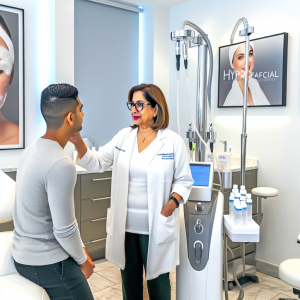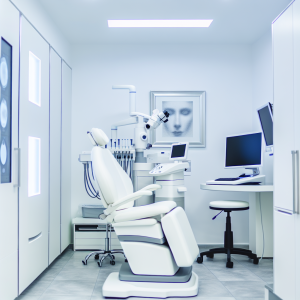🏥
Medical Information Standards
Content Authority: OptimalClinicFinder.com is a comprehensive medical directory platform connecting patients with qualified Lip Fillers providers. Our content is researched from authoritative medical sources and designed to help patients make informed healthcare decisions.
What Are Lip Fillers and How Do They Work?
Lip fillers are injectable cosmetic treatments designed to enhance the volume, shape, and definition of the lips. The most commonly used and safest type of lip filler contains hyaluronic acid, a naturally occurring substance in the body that helps maintain skin hydration and volume. When injected into the lips, these fillers add immediate volume while also attracting and binding water molecules, creating a natural-looking enhancement.
The mechanism of action involves the hyaluronic acid gel integrating with the existing tissue structure of the lips. Unlike some other dermal fillers, hyaluronic acid-based lip fillers are reversible, meaning they can be dissolved if needed using an enzyme called hyaluronidase. This safety feature makes them the preferred choice for lip enhancement procedures.
💡
Did You Know?
Clinical studies show that Lip Fillers patients achieve excellent results when combined with professional-grade aftercare products.
FDA-Approved Uses and Applications
The FDA has approved several hyaluronic acid-based fillers specifically for lip augmentation and perioral enhancement. The primary approved uses include:
- Lip volume enhancement: Adding fullness to naturally thin lips
- Lip border definition: Creating clearer lip lines and cupid’s bow
- Asymmetry correction: Balancing uneven lip proportions
- Age-related volume loss: Restoring lips that have thinned with age
Common off-label uses, when performed by qualified practitioners, may include subtle lip lift effects, smoker’s lines treatment around the lips, and minor scar revision. However, these applications should only be performed by experienced injectors who understand facial anatomy thoroughly.
The Consultation Process
A comprehensive consultation is crucial for successful lip filler treatment. During your initial appointment, your provider should:
Medical History Review: Discuss your medical history, current medications, allergies, and previous cosmetic treatments. This helps identify any contraindications or special considerations for your treatment.
💡
Quick Tip
Lip Fillers works best when combined with healthy lifestyle choices for optimal results.
Aesthetic Assessment: Analyze your facial structure, lip anatomy, and natural proportions. Your provider will examine your lips at rest and while speaking to understand how they move and function.
Goal Setting: Discuss your desired outcomes realistically. Your provider should show you before and after photos of similar cases and explain what results are achievable with your specific anatomy.
Treatment Planning: Develop a customized treatment plan including the type of filler, injection technique, and expected number of sessions needed to achieve your goals.
Risk Discussion: Review potential side effects, complications, and aftercare requirements. A reputable provider will ensure you understand all risks before proceeding.
Treatment Procedure and What to Expect
The actual lip filler procedure typically takes 15-30 minutes and follows these steps:
✓
Why Choose Lip Fillers?
●
Clinically proven
●
FDA approved
●
Minimal downtime
●
Long-lasting
Preparation: The treatment area is cleaned and photos are taken for reference. Topical numbing cream may be applied 15-20 minutes before injection to minimize discomfort.
Injection Process: Using ultra-fine needles or blunt-tip cannulas, the provider strategically injects small amounts of filler into predetermined areas of the lips. The technique varies based on your specific goals and anatomy.
Immediate Assessment: After injection, your provider will assess the results and may make minor adjustments to ensure symmetry and desired shape.
Post-Treatment Care: You’ll receive specific aftercare instructions and be scheduled for a follow-up appointment to monitor healing and results.
Recovery Timeline and Aftercare
Understanding the recovery process helps set realistic expectations for your lip filler journey:
Immediate (0-24 hours): Expect swelling, potential bruising, and mild discomfort. Your lips may appear overdone due to swelling, which is completely normal.
🏆
Verified Providers Only
All our directory providers are licensed, experienced, and patient-safety focused.
Days 2-3: Swelling typically peaks and then begins to subside. You may experience tenderness when eating or speaking.
Week 1: Most swelling resolves, revealing more natural-looking results. Any bruising should fade significantly.
Weeks 2-4: Final results become apparent as the filler settles and integrates with your natural tissue.
Essential aftercare includes: Avoiding strenuous exercise for 24-48 hours, staying hydrated, using cold compresses for swelling, avoiding alcohol and blood-thinning medications, and following your provider’s specific instructions for optimal healing.
Comparing Lip Fillers to Alternative Treatments
While lip fillers are the most popular lip enhancement option, several alternatives exist:
Lip Flip with Botox: Uses botulinum toxin to relax the muscles around the upper lip, creating the appearance of fuller lips without adding volume. Results last 3-4 months and cost $150-$300.
Fat Transfer: Uses your own fat harvested from another body area to add volume to lips. Results can last longer than fillers but require a more invasive procedure with longer recovery time.
Lip Implants: Permanent silicone implants provide lasting results but carry higher risks and may look less natural than injectable fillers.
Surgical Lip Lift: A surgical procedure that shortens the distance between the nose and upper lip, creating a more youthful appearance. This is a permanent solution but requires significant downtime and carries surgical risks.
Choosing the Right Provider
Selecting a qualified provider is crucial for safe, effective lip filler treatment. Look for these qualifications:
Medical Credentials: Choose board-certified dermatologists, plastic surgeons, or other licensed medical professionals with specific training in facial injectables.
Experience and Specialization: Seek providers who regularly perform lip filler procedures and can show extensive before-and-after portfolios of their work.
Facility Standards: Ensure treatments are performed in clean, medical-grade facilities with proper safety protocols and emergency equipment.
Product Quality: Verify that only FDA-approved fillers from reputable manufacturers are used. Avoid providers offering unusually cheap prices, as this may indicate inferior products.
Communication and Ethics: Choose providers who take time to understand your goals, explain procedures thoroughly, and prioritize your safety over profit.
⚠️
Safety First
Always consult a qualified medical professional before starting Lip Fillers. Results vary by individual.
Latest Research and Clinical Studies
Recent clinical studies in 2024-2025 have continued to demonstrate the safety and efficacy of hyaluronic acid lip fillers. Key findings include:
A multicenter study published in the Journal of Cosmetic Dermatology found that 95% of patients maintained satisfaction with their lip filler results at 6 months, with minimal adverse events reported.
Research on injection techniques shows that using blunt-tip cannulas reduces bruising and swelling by up to 40% compared to traditional needle techniques.
Long-term safety data continues to support the use of FDA-approved hyaluronic acid fillers, with no increased risk of complications even with repeated treatments over multiple years.
New formulations of hyaluronic acid fillers specifically designed for lip enhancement have shown improved longevity, with some patients experiencing satisfactory results for up to 15 months.
Insurance and Financing Options
Lip fillers are considered cosmetic procedures and are typically not covered by health insurance. However, several financing options can make treatment more accessible:
Medical Financing: Companies like CareCredit, Alphaeon Credit, and Prosper Healthcare Lending offer specialized medical financing with promotional interest rates.
Provider Payment Plans: Many practices offer in-house payment plans or package deals for multiple treatment sessions.
Health Savings Accounts: While not typically eligible for HSA funds, some patients may be able to use these accounts if the procedure addresses a medical concern.
Seasonal Promotions: Many providers offer discounts during slower seasons or for first-time patients.
Maintenance and Long-Term Care
To maintain your lip filler results, most patients require touch-up treatments every 6-12 months. The longevity of results depends on factors including:
- Type of filler used
- Individual metabolism
- Lifestyle factors (smoking, sun exposure)
- Lip movement and activity level
- Initial volume of filler placed
Building a long-term relationship with a skilled provider ensures consistent, natural-looking results over time and allows for adjustments as your preferences or anatomy changes with age.
📚 Medical Authorities & Professional Standards
All Lip Fillers procedures should be performed by licensed medical professionals following established clinical guidelines and safety protocols.
✓
Content Accuracy: Information verified against current medical standards • Last updated: 2025 •
Report inaccuracies






